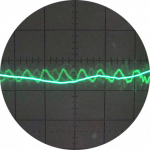Posted by: @cathoderayYes, on the left hand side it peaks at just under 8kWh (which is 8kW over that hour, unless I've totally lost the plot). Clearly this is much closer to your figure, but how do we reconcile that with the Midea Engineering Data, and the fact the for whatever reason (though presumed to be inadequate heat supply) the actual IAT has fallen below the desired IAT. If the heat pump has some reserve, why doesn't it use it?
I assume your figure, like mine, is from flow rate and dt. If so then they are subject to the same errors/factors. It could be flow rate, it could be but is less likely to be dt, or it could be that the pump is not maxing out at the stated value. The answer may be hidden in the data, or may not be. Dt is easy to check, flow rate not so.
4kW peak of solar PV since 2011; EV and a 1930s house which has been partially renovated to improve its efficiency. 7kW Vaillant heat pump.
Posted by: @derek-mAs CathodeRay has correctly stated, the maximum thermal energy output that the heat pump can produce in the 0C to -2C OAT range, is in the order of 11.5kW, but since the heat pump is not producing thermal energy output for 100% of the time, and if defrosting, it is actually grabbing some of this thermal energy back, The average thermal energy input to the home during the viewed period may be much lower than 11.5kW.
If this is correct, then this is compressorgate! Seriously, though, I thought the engineering data was supposed to include the effects of defrost cycles. If they don't, then they are manufacturers fancies that have nothing to do with real world performance.
Midea 14kW (for now...) ASHP heating both building and DHW
Posted by: @jamespaDt is easy to check, flow rate not so.
DT might actually be the harder one, depending on how and where you measure it (and bearing in mind I have a PHE). The flow rate has two things that make it easier to measure: (a) the fact it is constant or near constant most of the time and (b) that hidden away inline analogue meter that can be used to verify (or not) the modbus/wired controller values.
Midea 14kW (for now...) ASHP heating both building and DHW
Posted by: @cathoderayPosted by: @derek-mAs CathodeRay has correctly stated, the maximum thermal energy output that the heat pump can produce in the 0C to -2C OAT range, is in the order of 11.5kW, but since the heat pump is not producing thermal energy output for 100% of the time, and if defrosting, it is actually grabbing some of this thermal energy back, The average thermal energy input to the home during the viewed period may be much lower than 11.5kW.
If this is correct, then this is compressorgate! Seriously, though, I thought the engineering data was supposed to include the effects of defrost cycles. If they don't, then they are manufacturers fancies that have nothing to do with real world performance.
Manufacturers normally specify if figures are net of defrost.
Of course if the tests are done in the arizona desert rather than on a small island on the edge of the eastern atlantic with a south west prevailing wind, net of defrost might be quite different.
4kW peak of solar PV since 2011; EV and a 1930s house which has been partially renovated to improve its efficiency. 7kW Vaillant heat pump.
Posted by: @jamespaPosted by: @derek-mDoes your method use all the one minute data, or just the one minute data for the periods when the heat pump was actually producing thermal energy?
It uses all the one minute data positive and negative except if the diverter is set to dhw.. Energy for defrost comes from the house so should be and is subtracted from the energy delivered to the house.
I suppose that answers the question why the heat pump cannot maintain the IAT when it enters defrost territory, along with the previously identified weaknesses in the overall design of the system.
The average thermal energy output of 8kWh is not going to be able to maintain the IAT for a home with a calculated heat loss of 12.4kW.
Posted by: @cathoderayPosted by: @jamespaDt is easy to check, flow rate not so.
DT might actually be the harder one, depending on how and where you measure it (and bearing in mind I have a PHE). The flow rate has two things that make it easier to measure: (a) the fact it is constant or near constant most of the time and (b) that hidden away inline analogue meter that can be used to verify (or not) the modbus/wired controller values.
To reconcile the figures measured at the heat pump it must be measured at the heat pump. Measuring it at the phe (and measuring dt across the phe) will tell you about any degradation that part may cause, but this is a separate matter.
4kW peak of solar PV since 2011; EV and a 1930s house which has been partially renovated to improve its efficiency. 7kW Vaillant heat pump.
Posted by: @jamespaTo reconcile the figures measured at the heat pump it must be measured at the heat pump.
As I thought, but that is the least accessible place, and invasive approaches are not an option.
Midea 14kW (for now...) ASHP heating both building and DHW
Posted by: @jamespaPosted by: @cathoderayYes, on the left hand side it peaks at just under 8kWh (which is 8kW over that hour, unless I've totally lost the plot). Clearly this is much closer to your figure, but how do we reconcile that with the Midea Engineering Data, and the fact the for whatever reason (though presumed to be inadequate heat supply) the actual IAT has fallen below the desired IAT. If the heat pump has some reserve, why doesn't it use it?
I assume your figure, like mine, is from flow rate and dt. If so then they are subject to the same errors/factors. It could be flow rate, it could be but is less likely to be dt, or it could be that the pump is not maxing out at the stated value. The answer may be hidden in the data, or may not be. Dt is easy to check, flow rate not so.
Don't forget, the DT values supplied are integers, but I doubt that they are in the real World. Since heat pumps like to operate at a nominal DT of 5C, a 1C difference due to one value being rounded up and the other being rounded down, immediately introduces a 20% error.
Posted by: @cathoderayPosted by: @derek-mAs CathodeRay has correctly stated, the maximum thermal energy output that the heat pump can produce in the 0C to -2C OAT range, is in the order of 11.5kW, but since the heat pump is not producing thermal energy output for 100% of the time, and if defrosting, it is actually grabbing some of this thermal energy back, The average thermal energy input to the home during the viewed period may be much lower than 11.5kW.
If this is correct, then this is compressorgate! Seriously, though, I thought the engineering data was supposed to include the effects of defrost cycles. If they don't, then they are manufacturers fancies that have nothing to do with real world performance.
There is normally notes attached to the data tables to indicate if defrosting cycles have been incorporated in the results. Unfortunately your heat pump is operating in far from ideal conditions, and the manufacturer clearly states that your, 14kW badged, heat pump, will only produce a maximum of 11.5kW when operating with LWT's above 50C.
Posted by: @cathoderayPosted by: @jamespaDt is easy to check, flow rate not so.
DT might actually be the harder one, depending on how and where you measure it (and bearing in mind I have a PHE). The flow rate has two things that make it easier to measure: (a) the fact it is constant or near constant most of the time and (b) that hidden away inline analogue meter that can be used to verify (or not) the modbus/wired controller values.
Both DT and flowrate can be difficult to measure accurately, particularly flow, where improved accuracy normally equates to more expensive. Temperature measurement should certainly be much cheaper, but again accuracy can be very much dependent upon installation and good thermal contact.
Posted by: @derek-mDon't forget, the DT values supplied are integers, but I doubt that they are in the real World. Since heat pumps like to operate at a nominal DT of 5C, a 1C difference due to one value being rounded up and the other being rounded down, immediately introduces a 20% error.
Good point. Depending on how good the control loop is the actuals may be a bit noisy, which on average might improve the resolution, but that's clutching at straws.
4kW peak of solar PV since 2011; EV and a 1930s house which has been partially renovated to improve its efficiency. 7kW Vaillant heat pump.
Posted by: @jamespaPosted by: @derek-mDon't forget, the DT values supplied are integers, but I doubt that they are in the real World. Since heat pumps like to operate at a nominal DT of 5C, a 1C difference due to one value being rounded up and the other being rounded down, immediately introduces a 20% error.
Good point. Depending on how good the control loop is the actuals may be a bit noisy, which on average might improve the resolution, but that's clutching at straws.
Actually, on second thought, it's the actual temperatures which are measured and reported as integers. Given that those do vary, and given that flow rate is roughly constant and thus dt varies, the average dt should have better resolution.
So I don't think that its likely to explain the discrepancy between 8kW measured and 11kW specified.
4kW peak of solar PV since 2011; EV and a 1930s house which has been partially renovated to improve its efficiency. 7kW Vaillant heat pump.
- 26 Forums
- 2,122 Topics
- 46.6 K Posts
- 41 Online
- 4,529 Members
Join Us!
Podcast Picks
Latest Posts
-
RE: Share Your Experiences with Heat Pump Manufacturer Support
@toodles , you are using homely aren’t you, and I belie...
By Terry1812 , 49 minutes ago
-

RE: ASHP heat output monitoring
@carlo - welcome to the forum. I don't know about LG...
By cathodeRay , 3 hours ago
-

RE: Why do we need pressurised systems?
@old_scientist If that were the case (and it might well...
By Toodles , 7 hours ago
-

OK... I'm here. But the amount of my time needed to add...
By Transparent , 9 hours ago
-
RE: 300 Liter Tank - Do I have to heat it all?
There’s no second hand market for DHW tanks (I was told...
By Judith , 14 hours ago
-

RE: Solar Power Output – Let’s Compare Generation Figures
We had an excellent four months (11/3 to 15/7) generati...
By JulianC , 22 hours ago
-
RE: Is this just haze or something more?
I think the present somewhat cooler hazy days show the ...
By Judith , 1 day ago
-
RE: My misgivings about installing ASHP and solar panels via the ECO4 scheme...
All noted and accepted and as I say I am sorry that you...
By JamesPa , 1 day ago
-
I think it is very much me that is sitting outside the ...
By Grantmethestrength , 1 day ago
-
RE: Replacing Refrigerant on Mitsubishi Heat Pump
@davidalgarve It should just be recovered by both servi...
By dgclimatecontrol , 2 days ago
-

RE: Who's your electricity provider and what's your tariff?
Aggregators have been recognised for many years, and it...
By Transparent , 2 days ago
-
RE: Help me keep the faith with my air source heat pump installation
Great news I edited my previous post (probably af...
By JamesPa , 2 days ago
-
RE: Double or Triple Glazed Windows?
@toodles Glad to hear things are progressing well for y...
By TRBob , 2 days ago
-

How to waste energy (and time) playing with AI.
A friend of mine who subscribes to an AI service was ex...
By Toodles , 3 days ago
-

RE: Heat Pump Books For Beginners – Bodge Buster & From Zero To Heat Pump Hero
@topher you’re more than welcome to, yes. I’ll send you...
By Mars , 4 days ago
-

RE: Fitting new shower valve ..........
I’ve never taken a chance when fiddling and changing ou...
By Mars , 4 days ago
-
You should contact the council and report the unsatisfa...
By JamesPa , 4 days ago
-

RE: Benefits of an extra horizontal loop for GSHP
I would deffo install an additional slinky run, especia...
By Transparent , 4 days ago



